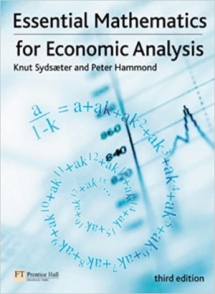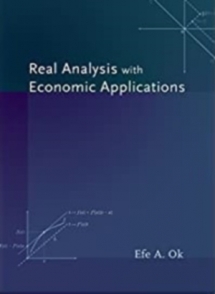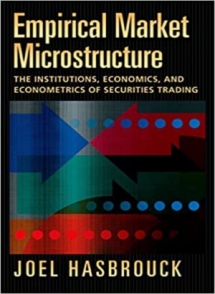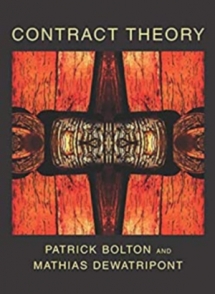 경제/경영
경제/경영
 경제
경제
분야별도서
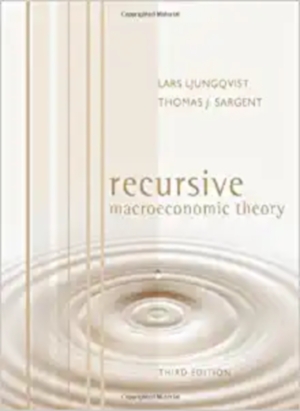
Recursive Macroeconomic Theory third edition
- 저자Lars Ljungqvist, Thomas J. Sargent
- 발행일2012-08-31
- 정가0원
- 페이지1,321 페이지
- ISBN978-0262018746
- 책소개
- 저자소개
- 목차
- 출판사 서평
Recursive methods offer a powerful approach for characterizing and solving complicated problems in dynamic macroeconomics. Recursive Macroeconomic Theory provides both an introduction to recursive methods and advanced material, mixing tools and sample applications. Only experience in solving practical problems fully conveys the power of the recursive approach, and the book provides many applications. This third edition offers substantial new material, with three entirely new chapters and significant revisions to others. The new content reflects recent developments in the field, further illustrating the power and pervasiveness of recursive methods. New chapters cover asset pricing empirics with possible resolutions to puzzles; analysis of credible government policy that entails state variables other than reputation; and foundations of aggregate labor supply with time averaging replacing employment lotteries. Other new material includes a multi-country analysis of taxation in a growth model, elaborations of the fiscal theory of the price level, and age externalities in a matching model.
The book is suitable for both first- and second-year graduate courses in macroeconomics and monetary economics. Most chapters conclude with exercises. Many exercises and examples use Matlab programs, which are cited in a special index at the end of the book.
Lars Ljungqvist
Lars Ljungqvist is Professor of Economics at the Stockholm School of Economics.
Thomas J. Sargent
Thomas J. Sargent is Berkley Professor of Economics and Business at New York University and Senior Fellow at the Hoover Institution. He was the recipient of the 2011 Nobel Prize in Economics.
Acknowledgements xix
Preface to the third edition xx
PartⅠ: The imperialism of recursive methods
1. Overview 3
PartⅡ: Tools
2. Time Series 29
3. Dynamic Programming 103
4. Practical Dynamic Programming 113
5. Linear Quadratic Dynamic Programming 127
6. Search, Matching, and Unemployment 159
Part Ⅲ: Competitive equilibria and applications
7. Recursive (Partial) Equilibrium 227
8. Equilibrium with Complete Markets 251
9. Overlapping Generations Models 315
10. Ricardian Equivalence 363
11. Fiscal Policies in a Growth Model 375
12. Recursive Competitive Equilibria 455
13. Asset Pricing Theory 481
14. Asset Pricing Empirics 515
15. Economic Growth 583
16. Optimal Taxation with Commitment 613
Part Ⅳ: The savings problem and Bewley models
17. Self-Insurance 699
18. Incomplete Markets Models 725
Part Ⅴ: Recursive contracts
19. Dynamic Stackelberg Problems 775
20. Insurance Versus Incentives 797
21. Equilibrium without Commitment 859
22. Optimal Unemployment Insurance 913
23. Credible Government Policies,Ⅰ 937
24. Credible Government Policies,Ⅱ 985
25. Two Topics in International Trade 1005
Part Ⅵ: Classical monetary and labor economics
26. Fiscal-Monetary Theories of Inflation 1045
27. Credit and Currency 1093
28. Equilibrium Search and Matching 1129
29. Foundation of Aggregate Labor Supply 1203
Part Ⅶ: Technical appendices
A. Functional Analysis 1257
B. Linear projections and hidden Markov models 1269
References 1275
2. Subject Index 1309
3. Author Index 1315
4. Matlac Index
"Lars Ljungqvist and Thomas Sargent's book provides comprehensive, how-to-do-it coverage of the methods of modern macroeconomic dynamics, illustrated with dozens of applications to real economic problems. It is both an encyclopedic, up-to-date reference and a practical teaching tool."--Robert Lucas, University of Chicago; Nobel Laureate in Economic Sciences, 1995
"I have used this book repeatedly in teaching first year graduate macroeconomics and it is truly aCredible Government Policies, tour-de-force. It presents the issues in a clear way, analyzes them with precise mathematics, and, importantly, has exciting problems that are just begging for smart students to solve them. Graduate students that carefully read this book and do every exercise can call themselves well-educated in modern macroeconomics. All serious practicing macroeconomists should have a copy of this book on their shelves, and its pages should be well-worn."--Patrick Kehoe, Department of Economics, University of Minnesota



 장바구니
장바구니